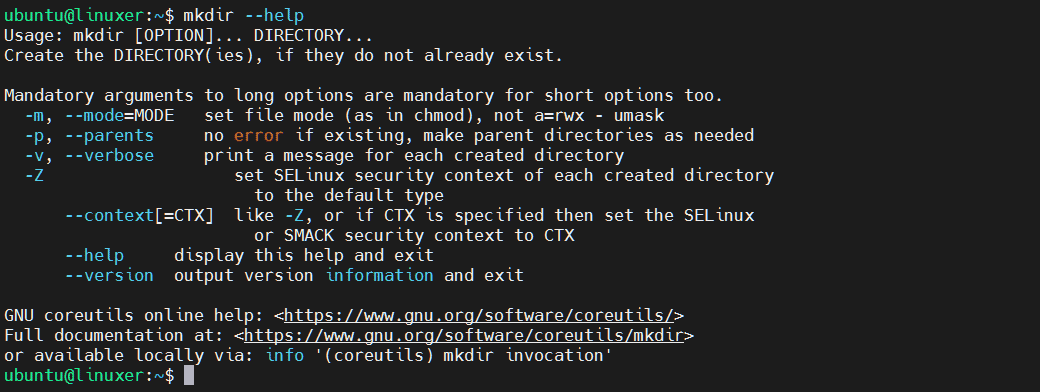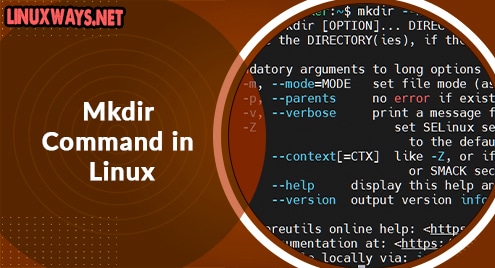Introduction
mkdir command stands for make directory allows the user to create an empty directory on Linux operating system. This command can also create multiple folders at once as well as set permissions for folders. Of course, pay attention to the permission to create the user’s directory when standing in the parent directory or not? Otherwise, you will get an error message about permission denied.
And the article below, we will show you how to use the mkdir command through several examples as go through below.
The syntax of mkdir command
$ mkdir [options] name
For example, I will create a directory named linuxer:
$ mkdir linuxer
Output:

options
–version check your version
$ mkdir --version
Output:

–help display help information
$ mkdir --help
Output:

-v show folder creation process
$ mkdir -v [name]
Output:

-p create a directory with parent directory level
$ mkdir -p [name]
For example, I will create the linux1 directory inside the linux2 directory:
$ mkdir -p -v linux1/linux2
Output:

-m create folders with specific permissions
$ mkdir -m [permission_value] name
For example, I want to create a directory named best with all permission:
$ mkdir -m a=rwx best
Conclusion
In this tutorial, we guided you on how to use the mkdir command with some examples.
Thanks for reading!




